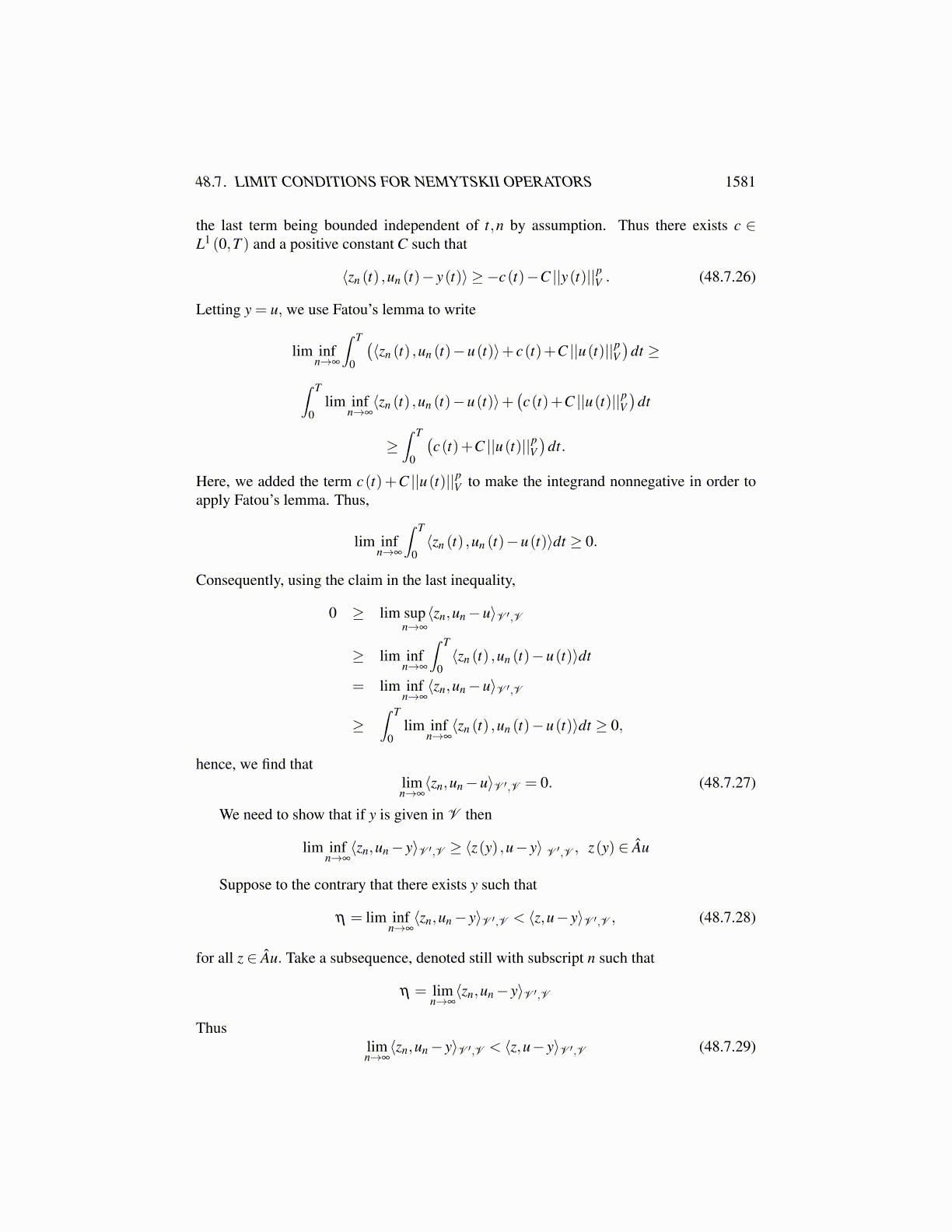
48.7. LIMIT CONDITIONS FOR NEMYTSKII OPERATORS 1581
5. For u ∈ Vp, we define Â(u) ∈ P(V ′p)
as follows: z ∈ Â(u) means that z(t) ∈A(u(t) , t) a.e. t. Thus this is the Nemytskii operator for A(·, t).
In the following theorem and in arguments which take place below, U will be a Hilbertspace dense in V with the inclusion map compact. Such a Hilbert space always exists andis important in probability theory where (i,U,V ) is an abstract Wiener space. However,in most applications from partial differential equations, it suffices to take U as a suitableSobolev space.
Theorem 48.7.3 Suppose conditions 1 - 5 hold. Also, suppose
V ⊆ H = H ′ ⊆V ′, where V is dense in H,
Then, the operator  satisfies the following.Hypotheses:
un→ u weakly in V , lim supn→∞
⟨zn,un−u⟩V ′,V ≤ 0,
for zn ∈ Âun, and there exists a set of zero measure Σ such that for t /∈ Σ, every subsequenceof {un} has a further subsequence, possibly depending on t /∈ Σ such that
un (t)→ u(t) weakly in U ′,
where U is a Banach space dense in V . In 3, if λ > 0, then assume also that
supn
supt∈[0,T ]
|un (t)|H < ∞. (48.7.22)
Conclusion: If the above conditions hold, then for each v ∈ V , there exists z(v) with
lim infn→∞⟨zn,un− v⟩V ′,V ≥ ⟨z(v) ,u− v⟩V ′,V .
where z(v) ∈ Â(u). Furthermore, Âu is a nonempty, closed and convex set in V ′.
Proof: It was argued above that Â(u) is closed and convex.Enlarge the set of measure zero Σ, if needed, so that for each n,
zn (t) ∈ A(un (t) , t)
for each t /∈ Σ.Next, we claim that if t /∈ Σ, then
lim infn→∞⟨zn (t) ,un (t)−u(t)⟩ ≥ 0.
Proof of the claim: Let t /∈ Σ be fixed and suppose to the contrary that
lim infn→∞⟨zn (t) ,un (t)−u(t)⟩< 0. (48.7.23)